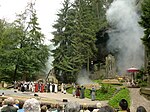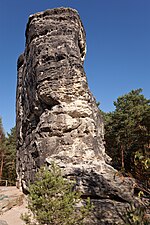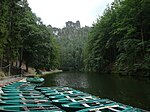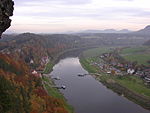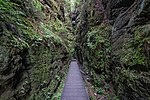Kurort Rathen station
Dresden S-Bahn stationsPages with no open date in Infobox stationRailway stations in SaxonyRathen

Kurort Rathen station serves the village of Rathen in the German state of Saxony. The station is located in the Oberrathen quarter of the village on the south bank on the Elbe on the Dresden to Děčín railway line. It is linked to the Niederrathen quarter on the other bank of the river by the Rathen Ferry, a passenger-only reaction ferry.The station is served by the Dresden S-Bahn S1 service. Trains run to Pirna, Dresden and Meißen in one direction, and to Bad Schandau and Schöna in the other direction. The service provides two trains per hour in both directions for most of each day.
Excerpt from the Wikipedia article Kurort Rathen station (License: CC BY-SA 3.0, Authors, Images).Kurort Rathen station
Pötzschaer Weg, Königstein/Sächs. Schw.
Geographical coordinates (GPS) Address Nearby Places Show on map
Geographical coordinates (GPS)
| Latitude | Longitude |
|---|---|
| N 50.95687 ° | E 14.07521 ° |
Address
Kurort Rathen
Pötzschaer Weg
01824 Königstein/Sächs. Schw.
Saxony, Germany
Open on Google Maps






